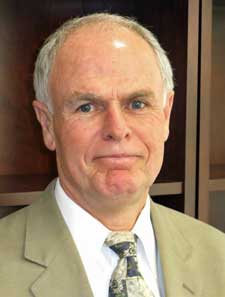Dennis Mangan was the chair of the Trans-NIH Working Group for ME/CFS, a little-known but critical element of the chronic fatigue syndrome program at the National Institutes of Health (NIH). In this long interview done last year I asked him, a former insider, why it’s so been so difficult to get anything done at the NIH.
First Some History
The National Institute of Allergy and Infectious Disorders (NIAID) housed chronic fatigue syndrome since the mid-1980’s to around the year 2000. While the NIAID never embraced ME/CFS it did create three ME/CFS research centers, and it was funding ME/CFS to the tune of about $7 million dollar a year.
Citing the fact that ME/CFS did not appear to be a infectious disease, and the multidisciplinary findings now characterizing the disorder, CFS was booted out of the NAIAD around 2000. Into the small Office Of Research On Women’s Health (ORWH) under the Office of the Director (OD) it went.
The central managing center of the NIH, the OD sets policy for the NIH as a whole and is responsible for “planning, managing and coordinating” programs across the NIH. In 2015, the Office of the Director will spend almost 1.1 billion dollars on research.
The ORWH was created in 1990 to promote research into women’s health issues. One of the smallest Offices in the NIH, the ORWH’s budget is about 41 million dollars this year.
The NIAID had already dumped ME/CFS when Vivian Pinn, the director of the ORWH saw that it had no home. Realizing that women were mostly affected and not wanting ME/CFS to be cast adrift, she offered to give it a home.
She was given the part-time services of Eleanor Hanna and zero dollars to run the program. From then on ME/CFS would depend funds from either from the ORWH’s coffers or via a newly formed group called the Trans-NIH Working Group or Working Group.
Composed of representatives from a variety of Institutes the Working Group was tasked with supporting “ME/CFS research by providing NIH Centers, and Offices with evidence-based rationale for supporting ME/CFS research and for attracting investigators to study this complex illness”. The rationale was that chronic fatigue syndrome was a multi-dimensional disease that didn’t fit in any one Institute. It would require the services of all the Institutes. The Working Group was an experiment in cross-Institute collaboration.
The Working Group, however, was given no budget either. Instead, its members were given the unenviable task of enrolling the Institutes in funding a disease for which none of them had responsibility.
Still, small contributions from the huge Institutes (NIAID – $4.4 billion, the NIMH – $1.5 billion, NIDDK – $1.7 billion and the NINDS- $1.6 billion – 2014) would make the program a success. Three million dollars from five large Institutes and a couple of million more from smaller ones would support an expanded research program, Centers of Excellence, Conferences and other programs the disease needed.
Those contributions, however, never showed up. In fact, the opposite occurred. The Institutes proved unwilling to support any ME/CFS projects that I can tell for next fifteen years. A long period of funding decline had begun.
The first casualties were the three CFS research centers. From 2001 to 2008 NIH funding dropped for ME/CFS by 45%. The NIH went from funding almost 40 ME/CFS studies in 1999 to ten in 2009.
Adjusted for inflation by 2008 the NIH was spending as much on ME/CFS as it had been in 1989. Studies indicating that ME/CFS was not a niche disorder affecting yuppies but a common, often disabling disorder affecting a million or so people in the U.S. made not the slightest difference.

The move to the ORWH and the creation of the Working Group began a long-term trend in declining funding
NIH funding for ME/CFS in 2015 is projected to be five million dollars – the same amount of money it was spending in 1993.
The reliance on the Working group to provide funding proved to be an unmitigated disorder for the ME/CFS community.
Before we get too upset at the Working Group, though, let’s look at the bind they were in. They’re asking their Institutes to give money to support a disease for which they’re not responsible. The NAIAD’s funding is dependent on its ability to move the needle on hepatitis, HIV, and cancer – not ME/CFS. NHLBI’s funding is dependent on making progress on heart and pulmonary disorders – not ME/CFS.
It was better to have ME/CFS in the ORWH than the alternative – having it be truly homeless – but it came with a price. ME/CFS was largely dependent on the goodwill of the Institutes for progress.
The Dennis Mangan Interview
Dennis Mangan is the former Chair of the Working Group. He did a lot in his short time as chair. He added members to the Working Group, produced the State of the Knowledge Workshop, changed the name by which the NIH referred to ME/CFS, created a Listserv and more. He was open and embraced community input. He was breath of fresh air. He was frustrated, though, by his inability to move the bar on funding. After he left the NIH he served on the advisory boards of several ME/CFS organizations and participated in ME/CFS efforts.
I wanted to know how the NIH worked and what obstacles were getting in our way. First let’s start off with what Dennis was able to accomplish despite the obstacles he faced.
What could you as the head of the Trans-NIH group do on your own without prior approval? I’m thinking of the Listserv, the changes to the website, using ME/CFS instead of CFS; things like that. Do you have to get approval for all that? Or did you just go ahead and do those things.
The Trans-NIH Working Group (WG) is under the direction of the ORWH. I started monthly meetings with the members. Representatives tell the Group what their Institute is doing, as well as help to increase awareness of CFS/ME at their Institute.
As the chair of the WG, I was a strong advocate for research on the disease, transparency at the NIH and communication with the public. This included setting up a listserv and a good website to inform the public of what was going on at the NIH.
After talking with attendees at CFSAC, I saw no reason to not include ME in the name. My reasoning was that NIH supports and encourages research on the disease, regardless of what it’s called. Call it whatever you want…but send in applications to study it and find a cure!
At the time, I didn’t think that changing the WG name (to include ME) would be such a big thing at the NIH. However, there was sizeable concern by NIH leadership that some sort of formal process should have been used to change the name of the Working Group. I suspect that, had such a process been implemented, the WG name would still be CFS today! As we’ve heard, “Sometimes it’s better to ask for forgiveness than to ask for permission.”
My decision remains unchanged: changing the name of the WG was the right thing to do.
I’d like to know how big things get done at the NIH; how a major project like the State of the Knowledge (SOK) Workshop (or the IOM contract) gets decided and then approved?
Ideas for an SOK Workshop arose from input from both outside and inside the NIH. For example, the SOK stemmed from numerous discussions with scientists, clinicians, and patients. Evaluation of published research articles and ongoing grant projects provided concrete evidence of gap areas in our knowledge of ME/CFS.
An RFA usually targets a specific topic and has set-aside funds to support applications. A PA is typically broader in scope and encourages applications within that scope, but has no set-aside funds.
The process for getting an RFA or PA approved follow similar paths. Discussions with research and patient communities usually spark the funding initiative. A Program Official submits a request for the RFA/PA and requests a funding level needed to support a few grants that will study the topic.
The Institute’s leadership evaluates the request and sets a putative funding level. The initiative “concept” is then presented to the Institute’s Council (sort of like a Board of Directors) for their approval. If approved by the Council, the RFA/PA is prepared and distributed to all Institutes at the NIH. (By doing this, NIH avoids issuing overlapping or conflicting RFAs/PAs and allows other Institutes to sign-on.) Finally, the NIH Director’s Office and the Center for Scientific Review approve the RFA/PA to make sure it meets all required regulations.
I suspect the process for approval of the IOM contract by the DHHS was similar to that for the NIH SOK workshop or setting up an RFA/PA.
Who decides you’re going to take on something like an RFA and the Workshop? Do you need to take it to the Trans-NIH Working group? Who do you need to get approval from?
Workshops such as the April 2011 SOK are the result of extensive discussion and evaluation of the current situation.
The SOK was perceived as being long overdue and had urgency. Its value to helping advance the field was considered great. That gave the workshop more visibility and higher priority. I was assigned the Working Group chair position in mid-2010, we started serious conversations in Fall 2010 and then the SOK was held in April 2011.

The tiny ORWH may be the only Office or Institute in the NIH to fund any ME/CFS projects in the past 15 years.
The Office of the NIH Director was fully in support of the SOK. The ORWH (one of many offices within the Office of the Director) did not hesitate to take on the responsibility of hosting and paying for the SOK. To keep costs down, the conference had to be held on campus and not in a hotel conference room. Because of the nature of the SOK in which the 30+ participants would discuss and debate issues, the conference room was needed that provided an environment that encouraged interactions.
ORWH funds were eventually allotted for video recording of both days. Getting space on campus and setting up the video required assistance of many teams at the NIH. With campus security tight since 2001, we also had to work with the NIH police department.
In short, the SOK required the cooperation of many parts of the NIH as well as other Federal agencies within the DHHS.
You noted that the “Office of the NIH Director was fully in support” of the SOK, but that funding of the SOK still came solely from the OWRH’s small budget. Three funding sources are available to ME/CFS at the NIH: the Institutes that make up the Working Group, the Office of the Director and the ORWH itself. Of those, it appears that only the ORWH, with its miniscule budget, has put forward significant funds for ME/CFS projects. Would you say that that’s accurate?
ORWH (one of the many offices within the Office of the Director) stepped up and did the right thing by supporting all aspects of the conference. ORWH recognized the importance and urgency of a meeting to summarize research on this illness. The costs of the conference greatly strained their tiny budget.
The Trans-NIH Working Group for ME/CFS
“No IC (Institute or Center) wanted to give ME/CFS a home. The result: no RFA and no COE.” Dennis Mangan
Given that the broad agreement on the State of Knowledge Workshop can we assume from that that the Working Group has not been in agreement on the need for an RFA or Center of Excellence – two major objectives that both CFSAC and advocates had pursued for years?
The Working Group considered many ways to increase funding for CFS/ME. This included sponsoring an SOK workshop, setting up a useful website, and spreading information about CFS/ME to potential applicants. Although the SOK provided the WG with lots of useful information and help to elevate awareness of CFS/ME, no Institute stepped forwarded to support an RFA.

Every effort to increase funding or support for the ME/CFS community appears to have been rebuffed by the Working Group
If you put the budgets of the Institutes that make up the Working Group together, you’re looking at billions of dollars of research funding a year. That seems like a nice pool of money to draw from –easily enough one would think to get a couple of COE’s built. The advocates have tried. They’ve highlighted the need for knowledgeable providers and for rigorous research to identify suitable treatments – something COE’s could provide. Here’s a list of CFSAC recommendations for COE’s from 2004-2010
- 2004 – asks five regional Centers of Excellence; 1.5 million/year per COE
- 2005 – asks five regional Centers of Excellence; 1.5 million/year per COE
- 2007 – asks for five regional Centers of Excellence; 1.5 million/year per COE. Produces a document explaining why COE’s needed, notes complete lack of clinical/research centers, notes high economic costs to nation, the need to treat and identify treatments rigorously and in an organized manner and get them out to other physicians
- 2009 – asked twice for five regional Centers of Excellence; 1.5 million/year per COE
- 2010 – in lieu of asking for COE’s, asks government to fund networking between clinics and develop a national clinical and research network.
Let’s take just three Centers of Excellence for ME/CFS funded for $1.5 million/each ($6 million/year). Thirteen Institutes and several Offices are represented in the Working Group. If they split that amount evenly each would pay a little over $400,000/year – a very small for medical research – yet even this is too much. Massive needs have been documented by federal studies for ME/CFS and the governments federal appointees have asked for COE’s again and again, – yet they still won’t do it. Why?
I like how you broke down the numbers and showed how funding could be divided among the WG participating Institutes. However, just because an IC is a member of the WG doesn’t mean it recognizes the importance and urgency for a COE.
Most of the major Institutes such as NIAID are still reluctant to give ME/CFS a “home.” Thus, it is hard to get anyone at NIH to advocate for RFAs and COEs. In short, ME/CFS needs a “home”! Right now, the best fit for a home IC would seemingly be “neurology”, such as NINDS.
You stated “We also knew that recommendations from a Workshop would give credibility and substance to a request for funding for ME/CFS research via an RFA or PA. An RFA followed the Neuroimmune Workshop in 2003. I expected one to follow the SOK workshop. I thought that Workshop was done in order to prepare for an RFA. Did you expect an RFA would follow the Workshop? Do you know why one did not follow?
I wanted the SOK information to guide us as to how to move forward with funding. There’s many research areas related to ME/CFS that could benefit from an RFA (or COE), such as immunology and neurology. However, NIH as a whole grew very conservative in 2011, and no IC wanted to give ME/CFS a home. The result: no RFA and no COE.

Mangan asserts fundamental change – a move to an Institute – is needed before the ME/CFS field will move forward
In theory, it makes sense for a range of Institutes to fund research into the range of problems found in ME/CFS. The core responsibilities of the Institutes, however, lie elsewhere. It’s not clear, for instance, why the Heart, Lung and Blood Institute with its hands full of heart disease would be interested in funding ME/CFS research.
Plus the buck doesn’t stop anywhere with the Working Group. Since this is a group effort no one Institute will ever shoulder the blame for not solving ME/CFS or get the credit for solving it. One can make the case that this funding structure has doomed ME/CFS to poor funding. What are your thoughts on this?
Quite simply, I would like to see one of the major Institutes at NIH give ME/CFS a “home.” Even if they are reluctant to support research on ME/CFS, these studies will likely elevate our understanding of other diseases and conditions, such as viral infectious diseases, autoimmunity, neuroinflammation, and so forth.
Politics
Various suggestions, including congressional action and Dr. Collins stepping in have been put forth for solving the funding dilemma. I explored these in the Politics section.

Getting Congress to force the NIH to fund ME/CFS is a possibility – but a short-term one unless the underlying factors that have kept it stuck are addressed.
Both Ian Lipkin and Llewelyn King have asserted that the only way Chronic Fatigue Syndrome is going to get significant funding from the NIH is for members of the Congress to demand it. That’s how both breast cancer research and autism – two other disorders the NIH was initially reluctant to fund – got their funding going. What are your thoughts on this? Is it going to take Congresspersons demanding more funding for the NIH to start pumping substantial amounts of money into ME/CFS?
I don’t like politics becoming the determining factor in scientific research. However, this might be necessary for increased funding for ME/CFS.
Do you ever interact with Senators or Congressmen?
Not directly. However, letters from Congress were delivered to me after going through the usual channels in the Office of the NIH Director and then the Director of ORWH. My job was to draft a response to their queries, explaining how NIH was addressing particular issues, such as the need for Centers of Excellence or funding for specific research centers. These letters again helped us recognize the urgency for an SOK.
Some suggestions have been made that we target Director Collins. Ian Lipkin has said NIH Director Collins recognizes that ME/CFS is ‘a problem’ and he would love to have money to devote to it, but his hands are tied. I talked to a researcher who said the NIH director could force the Institutes to do something, but he/she would pay a price. That made sense; the Institutes are the experts in their respective fields and having the Director telling them how to spend their money would probably not go over well. Do you ever see the Director telling Institutes to devote more money to certain areas and if so what prompts that?
It’s no secret that Dr. Collins is a big supporter of genetics research. However, I’ve never seen him dictate that any IC fund genetics over some other area. What the Director’s office can do is show Institutes how research on ME/CFS can provide insight into the pathophysiology of many other diseases and conditions. That is what ORWH tried to do in 2011.
Ian Lipkin recently also said the Anthony Fauci, the head of the NIAID would like to fund ME/CFS research but his hands are tied. But if Fauci wanted to spend money on an ME/CFS RFA, for instance, wouldn’t he just tell his Trans-NIH representative that the NIAID is willing to pump some money into that? How can the director of the NAIAD have so little power?
My understanding is NIAID is eager to support grants … just not through the RFA (money set-aside) mechanism.
(Because they come with guaranteed funding researchers flock to RFA’s That makes them a prime need for an ME/CFS field that has received little investigator interest. The NIH recognizes this. They have consistently bemoaned the lack of grant applications for ME/CFS, and have consistently stated they would fund good grants if they would only get them. Dennis notes that NIAID says they’ll pay for studies yet they have refused to fund the one mechanism – an RFA – guaranteed to bring new grant proposals and new investigators into the field.
The more cynical among us might suspect that the NIAID doesn’t want to grow the field. They know RFA’s would bring in new investigators and that would lead to more grant applications and require them to fund more ME/CFS grants. Jennie Spotila’s analyses show the ME/CFS field has been situated among the bottom dwellers at the NIH for decades. (It’s 233rd in funding.) It’s not moving forward or backwards at this point and that’s not likely to change. The NIAID and every Institute on the Working Group knows this.
The one RFA in ME/CFS’s history – the Neuroimmune RFA of 2006, did what it was supposed to do. It attracted increased numbers of grant proposals and added new researchers to the field. )
What about the Director of the DHHS? Does he/she ever reach down and tell the Institutes what to spend their money on?
Not that I know of. Just below the Secretary of DHHS, Dr. Howard Koh and Dr. Wanda Jones gave ME/CFS high visibility within the Department, but did not dictate to agencies how to spend their appropriations from Congress.
If I’ve heard you right, until an Institute steps up to give ME/CFS a home you don’t see the Trans-NIH Working Group working together to fund RFA’s, COE’s or any other major projects for Chronic Fatigue Syndrome? Would you say that’s correct based on your experience there?
To clarify, although the WG elevates awareness for ME/CFS across the NIH, it has no funding authority. Institutes have funding authority …that’s where the money for an RFA or COE originates.
That is why it is important for an Institute at NIH to take ME/CFS as part of its mission.
Conclusion
“Thus, it is hard to get anyone at NIH to advocate for RFAs and COEs. In short, ME/CFS needs a “home”!” Dennis Mangan
There you have it. If anyone knows what this disease needs Dennis Mangan does.
Barring some unusual development such as the Office of the Director directly funding ME/CFS, until an Institute “owns’ and is responsible for ME/CFS, it’s very hard to see how opportunities that the P2P and IOM reports present are ever going to be fulfilled.
Even if the Working Group stepped up for the first time in its history and supported this disorder this year, it’s history suggests it’s commitment would quickly fade. A similar situation might occur with a Congressional Directive.
The ORWH – which took ME/CFS in after it had been cast adrift by the NIAID – is the hidden hero in all this, but without set-aside funding for the ME/CFS program coming from the OD, it’s been simply too small to provide for ME/CFS’s needs.
It’s time to push for fundamental change – a rethinking of every aspect of this program – where it is located, how it is funded, how it will move forward. In short how it can thrive.
The past fifteen years suggest that until ME/CFS gets “advocate” – an Institute – to back it – the next fifteen years are going to look like the past. It simply has no source of funding to draw from.
That’s why the first recommendation from the P2P draft report shouldn’t have been to increase funding but to give ME/CFS a home in an Institute and make an Institute responsible for it. The buck has to stop somewhere finally. Moving to an Institute doesn’t mean chronic fatigue syndromes troubles are over, but it does mean it may have a fighting chance. It doesn’t now.
That should have been clear 15 years ago.
If the million or more people with the U.S. are to get relief and support, the ME/CFS program must move.
- Next Up -The Institute We Should Move to – and Why Fibromyalgia Should Move With Us














I’m a little deflated after reading this, just as we were finally starting to see a light at the end of the very long tunnel. This whole picture is more of the usual bureaucratic bs. People sitting around tables deciding the fate of the minions! The ones pulling in the big money don’t want to take responsibility for anything that might not be a “slam-dunk” winner, just in case it might reduce their credibility ( or horrors, their money! ). I really appreciate all you do Cort, with Health Rising and your vigilance in keeping up with SO much information. It does help everyone that reads it understand what is happening. Thank you from the bottom of my heart.
The fact is that we’ve been caught in an impossible situation for 15 years. Yes it’s a bit deflating but it is a fundamental problem that we have to address. I don’t see any way at all for ME/CFS to move forward without dealing with this and that means fundamental change is needed. There’s just no funding source…
The good news is that if we can get out of it – we may really be able to move.
Fifteen years ago we were getting $7 million a year from an Institute that didn’t really want us there. My guess is, with the gathering support we’re getting, we can do far better now – if we can get into an Institute.
As I’ve said before and apparently it’s what Ian Lipkin is saying we need a very aggressive lobbyist! If you study the AIDS movement, they got their money because of Congress, even though Mangan doesn’t like politics dictating research-that’s the reality.
My best friend is the president of the National Cabin Association and they had to hire a lobbyist to fight the National Forrestry Service to keep them from raising rents. He said without it they would have never been able to win.
Congress ultimately controls all the money in this country, we all know that!
For fifteen years or more people have tried the people approach. We are too sick.Lobbying is what works in America if not big companies wouldn’t put big money into to the extent it’s a big industry in of itself. Too long ME groups have played the wrong game. An aggressive lobbyist is what’s needed.
That may be the best use of our resources. It’s great that people give to research but building a research program that works – that provides tens of millions of dollars a year for ME/CFS – year in and year out – that’s the biggest bang for our buck – that’s what would make the biggest difference in the long run.
I agree with you Gregory, Matt & Cort.
I feel when one door closes another will open that will suit us better then a non supportive one like we have had!! SO,Let us all visually see what we want to come to help us all in this quest..have faith & it will be done.
Patty i understand the short term deflation. However, the fate of ME patients has and will continue to be dire, unless we face the information presented by Cort et al. Interestingly, money was allocated fro other disease states for AIDS and MS.
President Obama’s wife, Michelle’s, father lived with MS in a time when MS was ignored by the NIH and there were no treatments. AIDS, while largely controlled and well funded continues to receive international funding in large amounts. I think our biggest hurdle is nation has no idea the suffering ME patients live. Until that story pulls on the heart strings of Americans and shocks the Congress or president to act we will be fighting mini battles for years to come.
Desperate times call for desperate measures. Is it possible to get an Executive Order for ME funding from the President. Maybe his wife can tell him, what suffering a chronic illness is like with no treatment. On the other aisle, former Presidential candidate Mitt Romney’s wife has MS. I would imagine she would be empathetic to a similar disease to hers without treatment.
Time we get creative. Time we get the public to know what it is like to have ME. Never know who might come out of woods and rescue lives stolen. The whole ME story is atrocious. There is much money privately and publicly that needs to be accessed through creating thinking. Massive publicity. We need to come up with a solution and not the problem!
Okay. It sucks. It is really, Really bad. Now that’s said what do we do? What can we do that’s proactive? Gregory’s right. We need an extremely aggressive lobbyist. One up to this messed up challenge. And we need to pay them as well. What else can we do that’s proactive?
We can get together as patients, supporters and organizations and argue that ME/CFS needs a total revamping – a reworking from the ground up – that results in a funding source we can count on, on someone taking accountability for this disease and a strategic plan that identifies the needs and how to move forward to tick them off one by one.
As Dennis noted we can argue that insights that occur into ME/CFS will benefit other disorders as well.
Is anyone planning on doing that, Cort?
I am and I know some others are – and we’ll broaden it as much as we can.
Brilliant! We’ve got to get this smart, targeted, informed advocacy going.
It’s great that you interviewed Dennis Mangan. We need to understand the politics and structure of all this NIH stuff so we can dig ourselves out.
Grateful for you and your blog, Cort!
Yes, indeed – we need to understand what’s blocking us and where the leverage points that produce major change.
We’ve been shooting blanks so far for the most part. Somehow those reports got done – that helps. Now we need to maximize them…
Lovely. Now I’m even more thoroughly depressed.
And I don’t suppose ANYONE will even look at the B1 (now plus Manganese) that helps some of us, me included – because it doesn’t lead to something patentable that can bring in the big bucks.
Hey, Alicia, Manganese or Magnesium? It didn’t work for me anyhoo…
This lack of funding issue seems like something to publicize- 60 Minutes, Dateline, TV News shows on cable?
How about hiring a PR or advertising agency to create an entire nation-wide marketing campaign to help translate & portray what living with untreated ME/CFS/SEID has been like for the past 15+ years? This would then provide the prompt for the federal agency “home,” lack of funding & further research needs. It’s the American way, after all, to advertise.
It would be a great thing. We can never ever raise the money we need for research on our own. The NIH needs to be involved in order for us to have success….Putting a significant sum towards getting a strong ME/CFS program created at the NIH would be worth many times however much it cost.
Cort,
I really appreciate this article and interview with Dennis Mangan. I too am worried that having ME/CFS/SEID in the Office of Women’s Health is a dead-end. I hope we as a community can learn more about how a switch can be made to one of the major institutes, and advocate as appropriate.
With M.E. being classified as a neurological disease in the WHO since 1969, it does seem a more natural fit for us to be under NINDS (National Institute of Neurological Disorders and Stroke) where we would join MS and Lupus who are already there.
Now, how do we get there? This is a serious question. I look forward to hearing more of your thoughts on this in your next blog, Cort.
Also, @serenebeth:
It is good to hear others putting forward ideas on how we can work together as a community to improve our situation. I’m not sure if you are aware, but the idea of hiring a PR firm became a reality in January 2015 when MEadvocacy.org hired Crowds on Demand and launched the National PR Campaign for ME, and that work is happening as we speak. See http://www.meadvocacy.org/blog
(the 2nd entry down talks about the hiring of the PR firm).
Our community finds itself in a quickly changing landscape, and it will take the cooperation of advocates from many different viewpoints to accomplish the goals of increased funding for targeted biomedical research into our patient community, preferably on the sickest bedbound patients first who are most likely to show the abnormalities that would, in theory, unravel the science most expeditiously.
-Tom Jarrett
Patient Advocate
Sick for 8 years
Thanks Tom,
It’s a beautiful site!
I’m with you the last two goals of the project (see below). . I’m not with you on the challenging the IOM, P2P and the CDC multisite study. As soon as I saw that I steered away. I gave my concerns to one of the leaders.
For me challenging these projects wouldn’t work and I wouldn’t want it to work at this point because I believe we can leverage them to get increased funding. I think all three are really good for us.Like I said I steered clear after that. I like everything else you’re doing though.
(1) Challenging the three redefinition projects for “ME/CFS”, the IOM, the P2P and the CDC Multisite Study.
(2) Getting Myalgic Encephalomyelitis (ME) officially recognized as its own disease. ME has a 60 year history and has been classified as a neurological disease in the World Health Organization’s International Classification of Diseases since 1969.
(3) Getting a single clear definition for diagnosis and research, which includes the hallmark symptom of post exertional relapse, adopted as the official definition for M.E. Examples are the Canadian Consensus Criteria (CCC), the International Consensus Criteria (ICC) or an even better definition with the CCC and/or ICC as starting points. ME experts must be used in decision-making as the current “CFS” literature provides a misleading picture of the disease.
(4) Getting government funding to study this devastating disease, similar to the amounts being spent on diseases such as Multiple Sclerosis, Autism, Lupus, Crohn’s Disease, Inflammatory Bowel Disease, Parkinson’s Disease and Alzheimer’s Disease.
MEAdvocacy at MEadvocacy. org has just done that in the last 18 months. But our real problem is that we have an “advocacy” organization that has refused to advocate for the past 15 years. When Kim McCleary took over most advocacy functions were dropped, such as compiling lists of ME-savvy docs. When Kim’s husband got a job in Washington a few years back it seemed logical that finally she could be a strong lobbyist. But no, she dumped us for another organization where she could again run in place.
Meanwhile CAA became Solve MECFS (or similar) and now basically does seedling research projects — pilots of programs that may later be able to attract NIH support. I thinks they’ve had successes, Gordon Broderick being the one I mainly remember. Perhaps Cort can look into that for us in a future date. Media does turn to them, thinking they are an advocacy group, and new chief Carol Head does step into the breach some, as with a good letter to the Times, but they can’t pursue that goal with fire in the belly because that just is not what they are.
We need a John Lewis.
Did HIV/AIDS patients ever sue the powers that be for intentional indifference? Loss of income, PTSD? Class law suit? It would be a way for our voices to be heard.
I live in Canada but I agree with you Flora. We endure unimaginable suffering. We live in North America for heaven’s sake. Yes, class law suit is an excellent idea, if you could find lawyers willing to give it a go.
After today’s blog I could cry as I’ve had ME/FM x 15 years now, however, all we can do is push forward. Whatever the answer is to obtain funding and a “home” I feel through this blog together we may come up with some brilliant ideas, that’s if our brains can stayed “un-fogged” long enough!
great idea….advertising works….maybe a population- based market survey?
Great idea Flora, advertising agencies know what works with the public and its perceptions. They use focus groups and surveys among other things
Cort,
Great analysis. Thank you for laying this out.
We need a complete reboot of the last thirty years of public policy. Research funding, NIH institutional barriers, lack of a research strategy, flawed epidemiological strategy, bad medical education, failure to follow through on CFSAC recommendations, not a single meaningful outcome that have made a difference in patients lives.
Agreed. We need a comprehensive re-analysis of the situation that ends up with ME/CFS being put on a firm footing. We have two reports that state what’s missing in the research – now we need to expand on them and get to the infrastructure issues.
We need somebody to recognize that ME/CFS matters…..I know there are people in there who do. The question how many of them are there and are they enough to turn the tide.
Obviously we need to support them however we can.
Great idea Flora, advertising agencies know what works with the public and its perceptions. They use focus groups and surveys among other things
This really represents “joined up thinking” as they say in the U.K.! (that’s meant to be a joke). Haven’t these supposedly intelligent professionals any idea about the move to, say dual diagnoses of developmental development and psychiatric disorders? (Maybe a bad choice, but I’ve had ME for 25 years and have run the gamut of people thinking it’s not physical and I’m confident of my view now). Another example is integrative and multidisciplinary approaches to geriatric research. There are many precedents for finding a home for a multiple illness category. Somebody has to slice it up somehow and not be so selfish, apathetic or eaten up with inter-professional or inter-organizational rivalry. People with CFS/ME are really suffering and surely the latest ray of hope offered by the research on interferon gamma could be built on substantially (as well as the other biological research)? People with these illnesses and their advocates have been saying this for years…WE NEED MORE FUNDAMENTAL BIOLOGICAL RESEARCH, however most of us are too ill with the damn illness to shout it out! Have some campassion.
Thanks for doing this.
By the way, don’t like the use of “chronic fatigue” rather than “chronic fatigue syndrome” (or CFS if you’re short of space) in the title
That was an oversight – thanks for pointing it out – I fixed it.
Thanks for your excellent reporting Cort. Reading this blog today made me cry as it confirmed what we have suspected for a long time; we still have a long road and a lot of work ahead of us. After 30 years, I’m so sick and tired of being sick and tired. I pray for the stamina to hang in there and fight the battle that lies ahead. Thanks for your guidance.
Hang in there Pat! Because the infrastructure problems have played havoc with us for so long, fixing them – while not easy – would be a huge boon. We were getting $7 million a year from an Institute 15 years ago. We had three research centers. If we can get in an Institute again – that number should go up considerably I would guess.
I think they’re aware of this problem and I know there are people in the NIH who want us to have success. The publicity is helping…
We’ll see what happens!
We have had Congressional support (remember John Porter, the Congressman from Illinois in the last century?). His efforts helped, and before he retired, he called the committee meetings to excoriate the NIH and CDC for failing to spend the funds earmarked for CFS on other things. I think Mangan is right, that some branch of medicine, some group of real doctors, has to step up and own us as their patients. My reading of doctors in the US in general is that they will be scorned by their peers for taking us seriously as patients. The exceptions are such a short list of people, we mainly have their names memorized. Until the scorn notion is pierced, the political force will not be useful.
So which sort of doctors ought to own us? At least for NIH purposes. I do not really know. Internists, PCPs, infectious diseases, allergies, rheumatology, have all rejected this disease. Do we try a new group, or start with one of those who already actively rejected us? I am feeling pessimistic now, so I need pragamatic optimist to suggest the right group of specialists.
Had XMRV panned out, I think we would have virologists on our side. Are they a group in NIH? Neurologists strike me as a worthless group, based on my personal experiences. They like to dabble in pyschiatry as much as in physical disease, so they get stuck in the Wessely school rather quickly, even when the patient has come for treatment for sciatica.
oops I meant for failing to spend the funds for CFS on CFS, and instead spending the money on other things.
I think we’re a good fit for NINDS – neurology – if you look at their disease list – they’re chock full of diseases that may be very similar to ME/CFS…and I think fibromyalgia ought to be in there too..
Yes. Excellent idea. Second choice immune and rheumatology, whatever they are calling it. Probably next door to multiple sclerosis, wherever they are. We are kissing cousins.
I’m wondering if Dr. Clayton was sending out a message when she said we need to ACT UP like the AIDS advocacy group did in the 1980’s. I understand they all but shut down the FDA during a demonstration there. The ACT UP group would send out press releases so the news media would know in advance what was going to happen. They did smart things like demonstrate at a New York post office during the last day to file tax returns. Anyone who has read Hillary Johnson’s book ‘Osler’s Web” has probably seen the letter composed by employees of the CDC making fun of CFS patients, could that letter be used for newspaper publication or copies sent to congress to illustrate how we have been disrespected by our own government. Maybe these are inappropriate actions but this might be one way to let them know that CFS matters and we are tired of being put in last place.
It is impossible for us to be ACT UP because there are no healthy members of our community. AIDS was heavily centralized in NY and San Fran and LGBT had already been building political infrastructure and becoming politically attuned. We are scattered and not part of a political organization. And their community had substantial disposable income due to lack of child-bearing until recently.They also had many members in the arts and media who were media savvy, whereas our demography is random.
We could demonstrate on wheelchairs and gurneys but who’s going to get us there and who’s going to pay the way.
WE NEED MONEY AND A JOAN OF ARC TO LEAD. A HEALTHY, FUNCTIONAL JOAN OF ARC
Read more: Former NIH Official Says Chronic Fatigue Syndrome Program Must Move In Order to Succeed http://www.cortjohnson.org/blog/2015/03/11/former-nih-official-says-chronic-fatigue-program-must-move/
This situation just galls me. These research institutes are funded with OUR tax money, yet they act like it is THEIR money. I would just love it if we could all decide on one day, maybe a CFS awareness day or something like that, and all at once send letters, emails, faxes, various and sundry nasty-grams, to every senator, representative, the president and vice-president, the CDC, NIH, the World Health Organization, The United Nations, etc., to the point they are clogged up like a constipated elephant in front of an Ex-lax machine with a bent nickel, to the point they can’t conduct normal business or get a damn thing done until they cave in to our demands.
NIH Director will just allocate $30 million to form a special committee for communications simulation. They are geniuses in their way.
I doubt we’ll get anywhere without a lobbyist or three. Publicity is fantastic, but I think it can only set the stage.
Yes, I’ve often thought we need to ACT UP like the AIDS folks did; however, I wonder if we have the sustained focus and physical stamina to do that. Paradoxically, the AIDS movement benefited from sufferers facing speedy and awful deaths.
I’m not sure what it would take for us to convey the horror of living decades at such diminished capacity, physically, mentally, socially, financially–in every way. It’s even difficult for my own small circle of friends and family to recognize the degree to which I’m compromised.
I’d like to see MEadvocacy hire a lobbyist to take advantage of the publicity that’s out now. I wonder how much it would cost to hire a really good lobbyist….
Thanks for this, Cort, though it leaves me extremely frustrated.
I don’t buy that NIH leaders’ hands would be tied!
If NIH Director Collins wanted to do something he could either allocate a research budget for Office Of Research On Women’s Health which they could use on ME/CFS research, or he could create a new institute, Institute for Emerging Diseases (or something to that effect) which would host all diseases with a hitherto unknow etiology (this would be a healthy move not just for the ME/CFS issue, but to tackle all the other yet unknown illnesses out there).
If NIAID Director Fauci wanted to do something he could fund an RFA for biomedical research into ME/CFS.
These people are responsible for handling ME/CFS as well as all other diseases, here is no way we should let them make us view them as unable to do something about our situation.
Agreed about Fauci. Dennis stated the NAIAD is unwilling to support an RFA. If Fauci wanted to move things along all he needs to do support an RFA. He doesn’t even need to support a big one! How difficult could that be?
Apparently, according to Dennis who worked in the NIH for about 20 years – it would be very unusual for Collins to do something like that. Ron Davis told me the same thing. Collins could do something but he would have to step on the heads of the Institutes to do it. He would incur some costs and he’s just not willing to do that. He’s not invested enough.
However if we got enough Congress people to tell Collins that if he didn’t do something like that there would be consequences for the NIH – that would be another matter :).
I think the head of the Office of the Director would be more likely to be the person to give the ORWH money for ME/CFS. He’s got a huge budget. He’s shown up at CFSAC and other meetings from time to time yet he allows the situation to go on as it is…
Yes, that last sentence is the key. They have the power to change things for ME/CFS patients but they all allow the situation to go on as it is. Like a wise person I spoke to said, it’s not about what they _can_ do but about what they _will_ do.
So who is going to start the lobbyist salary fund? I’ve read this idea over and over, now who is gonna start it?! 😉
Good question – who is going to step up!
Cort, could you explain further to us how the CDC and NIH interface as far as where CFS/ME currently is categorized. Unless there has been a recent change, we are still under the broad heading of “chronic illnesses” with the CDC which, as we all well know, includes heart disease, diabetes, asthma, and other totally unrelated disorders that are not so multi-system as ours. I do realize that with the NIH we still fall under the age-old ??? Women’s Division which is an insult of itself. Would it be of benefit to pull CFS/ME out of the CDC’s Chronic Illnesses category and see if it could be placed within a new NEI category that would include other diagnoses such as Lupus, Parkinson’s, Multiple Sclerosis, Fibromyalgia, and other more related disorders? I’ll never forget when someone in a position of power quoted that CFS is taken as seriously as “heart disease, diabetes, etc”. Well, of course since that’s the category we are included under.
I recently saw a lengthy PSA on Multiple Sclerosis with a national walk planned. Would but that we could engender such an undertaking but that would require that we first put our disorder on the map which brings me back to billboards, more PSA’s for TV stations, educational information sent to local MD’s (but whose?).
I’d also like to thank Dennis Mangan for his continued advocacy on our part. Marcie